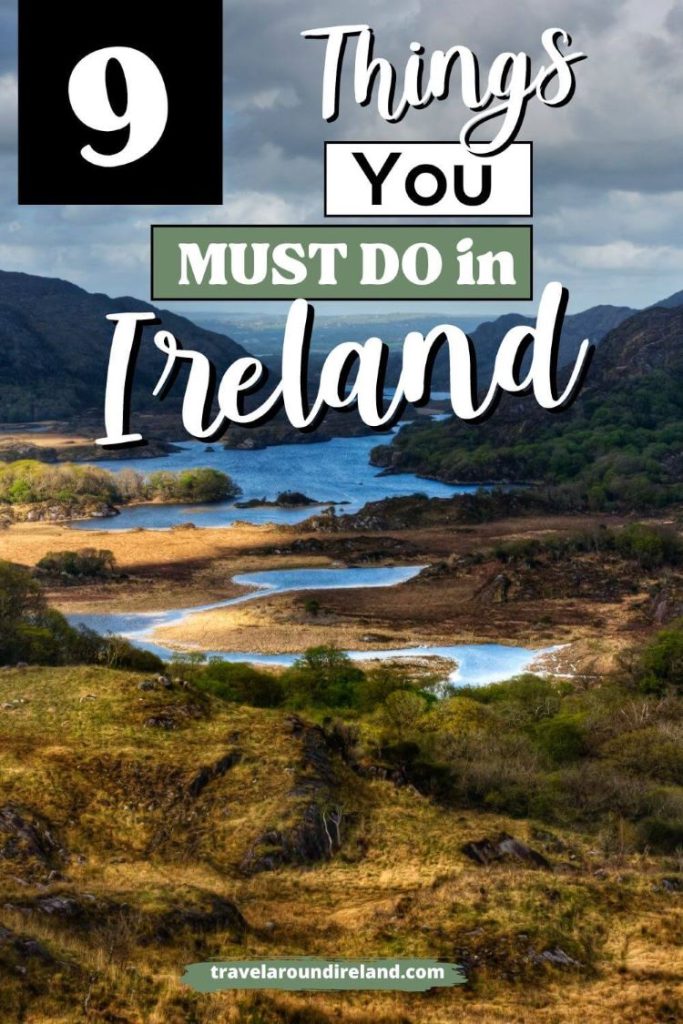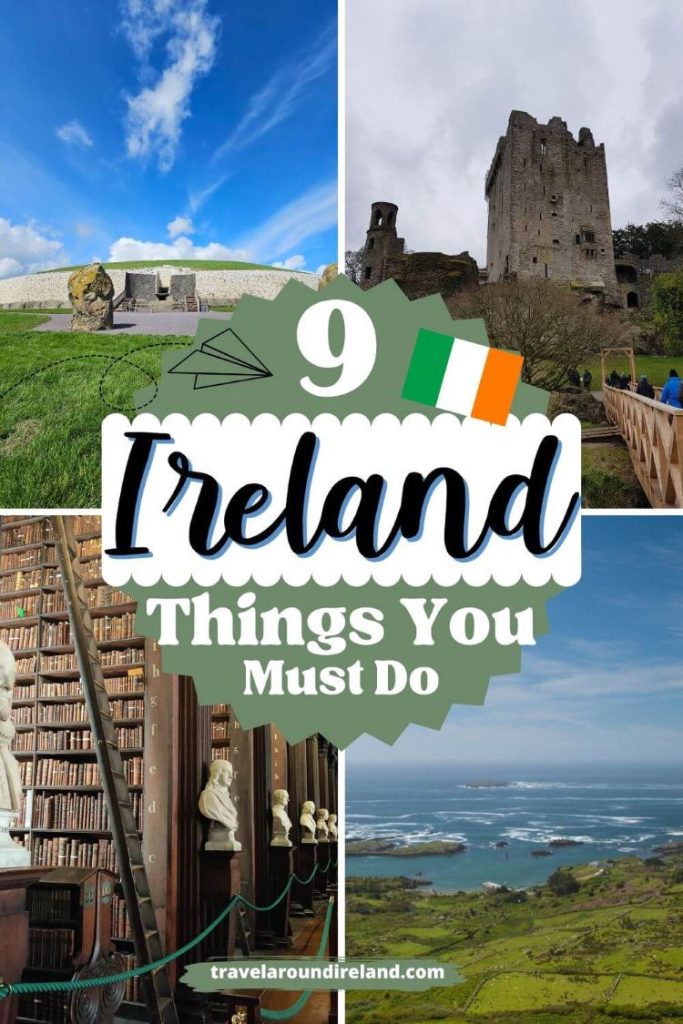If you are going to the Emerald Isle, then there are some experiences which are things you must do in Ireland.
With its enchanting landscapes, rich history and amazing culture, Ireland captivates visitors from all walks of life. So much so, that it often leaves a lasting impression.
And with so much at your fingertips, you can often feel overwhelmed with the choice of what to do. To make things a little easier while planning your trip to this tiny island, I’ve listed the top 9 things you must do in Ireland that are essential experiences for an incredible Irish adventure.
From ancient ruins and prehistoric tombs to the wild ruggedness of nature, these are just a fraction of the things you can do in Ireland to create unforgettable memories. Let’s look at my top 9!
- 1. Explore the Cliffs of Moher
- 2. Visit the Giant's Causeway
- 3. Discover the Ring of Kerry
- 4. Tour the Guinness Storehouse
- 5. Kiss the Blarney Stone
- 6. Explore the Wild Atlantic Way
- 7. Visit the Book of Kells and Trinity College
- 8. Visit the Aran Islands
- 9. Walk Through the Ancient Passage Tomb of Newgrange
- Conclusion
1. Explore the Cliffs of Moher
The Cliffs of Moher stand as a breathtaking natural wonder on Ireland’s west coast. These dramatic sea cliffs stretch for 14 kilometres along County Clare’s rugged shoreline, reaching heights of up to 214 metres.
Visitors can embark on exhilarating cliff walks, offering panoramic views of the Atlantic Ocean and the Aran Islands on a clear day. The well-maintained pathways provide safe vantage points for taking in the awe-inspiring scenery.
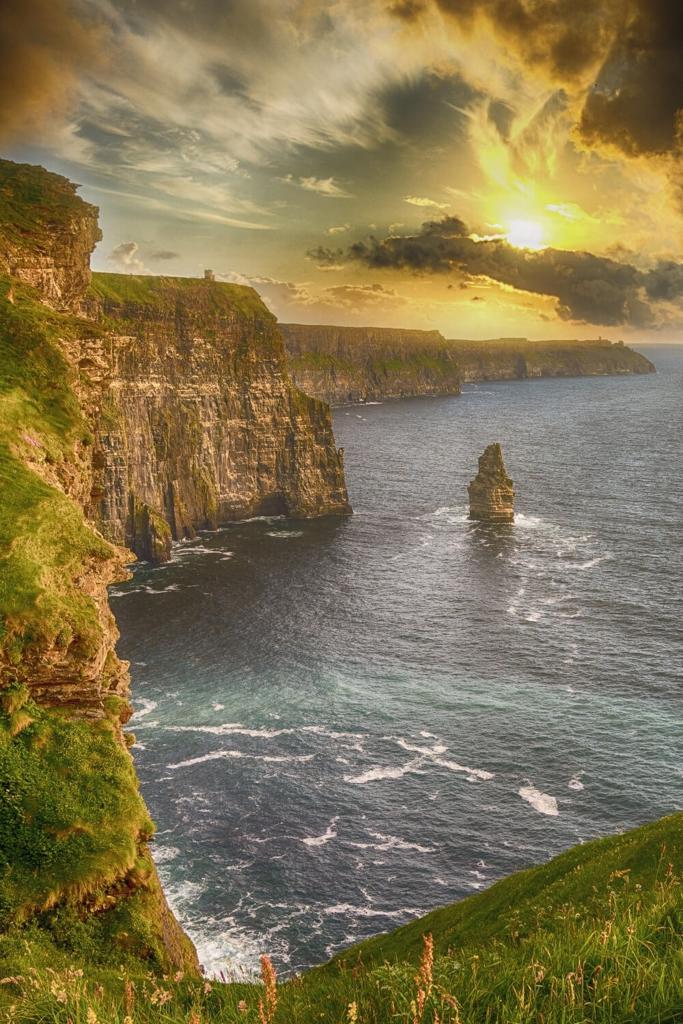
Even if the day isn’t the best and a clear view across Galway Bay isn’t afforded to you, the cliffs and the dramatic Atlantic Ocean that crash along their faces are more than enough to capture your appreciation.
The modern visitor centre houses interactive exhibits detailing the cliffs’ geological history and diverse ecosystems. It’s an excellent starting point for those keen to learn more about this iconic landmark.
For a unique perspective, boat tours operate from nearby Doolin. These excursions allow travellers to marvel at the sheer magnitude of the cliffs from sea level.
Top tips for visitors:
- Arrive early morning or late afternoon to avoid peak crowds
- Check weather forecasts, as conditions can change rapidly
- Wear sturdy footwear and warm, waterproof clothing
- Stay on designated paths for safety
The cliffs are particularly stunning at sunset when the fading light bathes the rock face in golden hues. Photography enthusiasts will find endless opportunities to capture the dramatic landscape.
Wildlife spotters should keep an eye out for the numerous seabird species that nest in the cliffs, including puffins, guillemots, and razorbills.
2. Visit the Giant’s Causeway
The Giant’s Causeway, located on the north coast of Northern Ireland, is a geological marvel that captivates visitors with its unique hexagonal basalt columns. This UNESCO World Heritage site boasts over 40,000 interlocking pillars, formed by volcanic activity millions of years ago.
Legend has it that the causeway was built by the Irish giant Finn McCool as a pathway to Scotland. This mythical tale adds a layer of enchantment to the already awe-inspiring natural landscape.
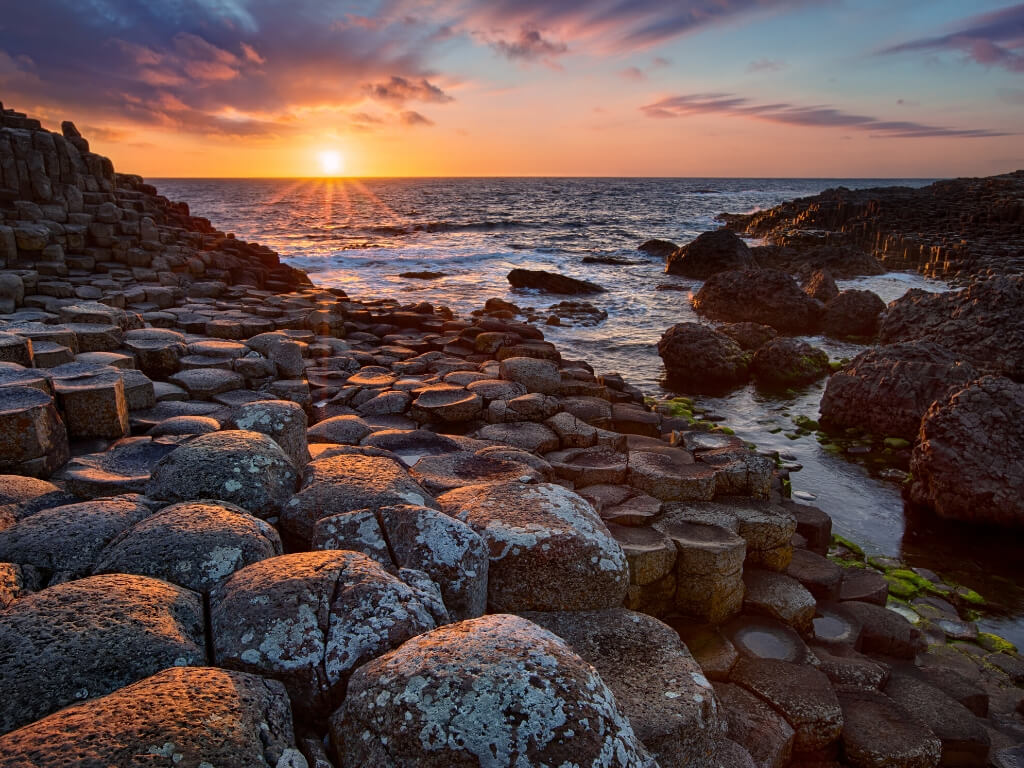
Visitors can choose between guided tours or self-exploration of the site. Guided tours offer in-depth insights into the geology and folklore of the area, whilst self-guided options allow for a more leisurely pace.
The Giant’s Causeway Visitor Centre provides interactive exhibits and information about the site’s formation and history. It’s an excellent starting point for any visit.
Nearby, the Carrick-a-Rede Rope Bridge offers another thrilling experience. Suspended 30 metres above the sea, this bridge connects the mainland to the tiny island of Carrickarede.
For the best views, consider visiting during sunset or sunrise. The changing light creates a magical atmosphere, perfect for amazing pictures.
Remember to wear sturdy shoes, as the terrain can be uneven and slippery when wet. It’s also advisable to bring a waterproof jacket, as the Irish weather can be unpredictable.
3. Discover the Ring of Kerry
The Ring of Kerry offers a captivating scenic drive around the Iveragh Peninsula in southwest Ireland. This 179-kilometre circular route showcases some of the country’s most stunning landscapes.
Begin your journey in Killarney, a charming town that serves as the gateway to the Ring. From here, venture into Killarney National Park, a lush expanse of mountains, lakes, and forests.
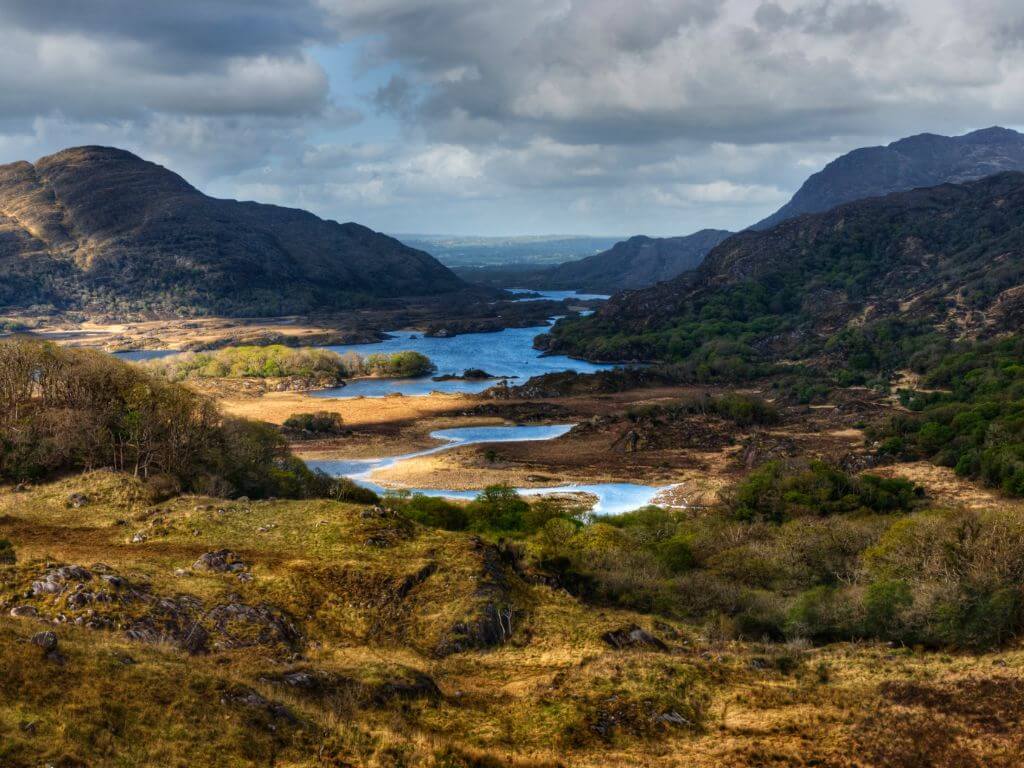
Don’t miss Muckross House, a 19th-century Victorian mansion set against the backdrop of Killarney’s lakes. The beautifully preserved estate provides a glimpse into Ireland’s aristocratic past.
Nearby, Torc Waterfall cascades through wooded scenery, creating a picturesque stop along the route. A short walk leads to viewing platforms for closer admiration of this natural wonder.
As you continue along the Ring, you’ll encounter quaint villages, rugged coastlines, and expansive mountain vistas. Consider stopping at Ladies View for panoramic scenes of the Lakes of Killarney (pictured above).
While it’s possible to complete the Ring of Kerry in a day, allowing two or three days enables a more leisurely exploration, especially if you want to visit the Torc Waterfall or Muckross Abbey. This extra time permits deeper exploration of the area’s rich history and natural beauty.
Remember to drive cautiously, as some sections of the road are narrow and winding and oncoming tourist buses can cause traffic jams at time. The Ring of Kerry rewards travellers with unforgettable Irish scenery and a true taste of the Emerald Isle’s charm.
Top tip: You could explore the Ring of Kerry by motorbike like my husband and I did during our honeymoon in Ireland. It meant we never got caught in traffic and, by going clockwise around the Ring, it was easy for us to pull in to admire the views and take pictures without having to cross traffic.
4. Tour the Guinness Storehouse
No visit to Ireland is complete without a trip to the Guinness Storehouse in Dublin. This iconic attraction offers a fascinating journey through the history of Ireland’s most famous export.
Visitors can explore seven floors of interactive exhibits, learning about the brewing process and the brand’s evolution since 1759. The tour includes hands-on experiences, such as pulling the perfect pint of Guinness.
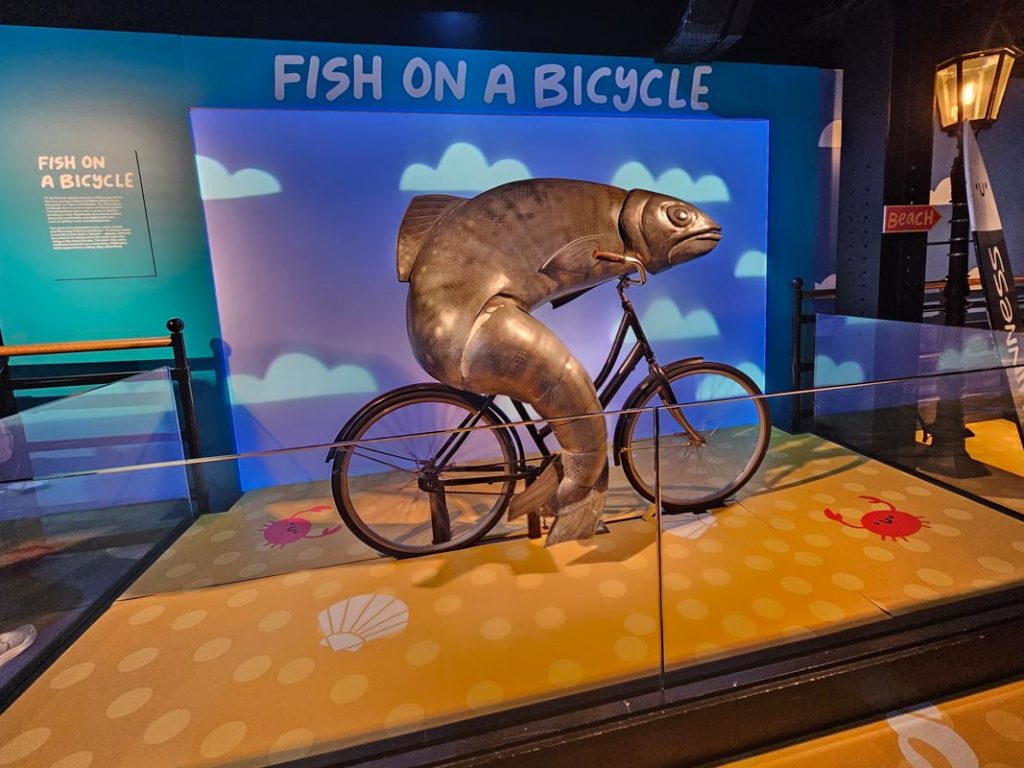
The highlight for many is the Gravity Bar on the top floor. Here, guests can savour a complimentary pint whilst enjoying breathtaking 360-degree views of Dublin’s skyline.
Much like the Cliffs of Moher above, on a clear day you will be given a panoramic view of the city and beyond but on grey, rainy days, you might only see part of the city. Just be warned.
Key features of the tour include:
- Multi-sensory tasting rooms
- Advertising exhibit showcasing classic Guinness adverts
- Cooperage and transport floor detailing the brewing journey
Booking in advance is recommended, especially during peak seasons. The storehouse is open seven days a week, with extended hours during summer months.
For those keen to delve deeper, the Connoisseur Experience offers an intimate tasting session with a Guinness expert. This premium option allows visitors to sample exclusive brews not available elsewhere.
Remember to stop by the retail store for unique Guinness merchandise before leaving. It’s the perfect place to pick up souvenirs for friends and family back home.
5. Kiss the Blarney Stone
Blarney Castle, located in County Cork, Ireland, is home to the famous Blarney Stone. This limestone block, set in the castle’s walls, has captivated visitors for centuries.
Legend has it that kissing the stone bestows the gift of eloquence. Tourists flock to the castle to partake in this quirky tradition.
The stone-kissing ritual involves lying on your back and bending backwards over a significant drop. Castle staff assist visitors to ensure safety during this unusual manoeuvre. But the Stone isn’t all there is to Blarney Castle.
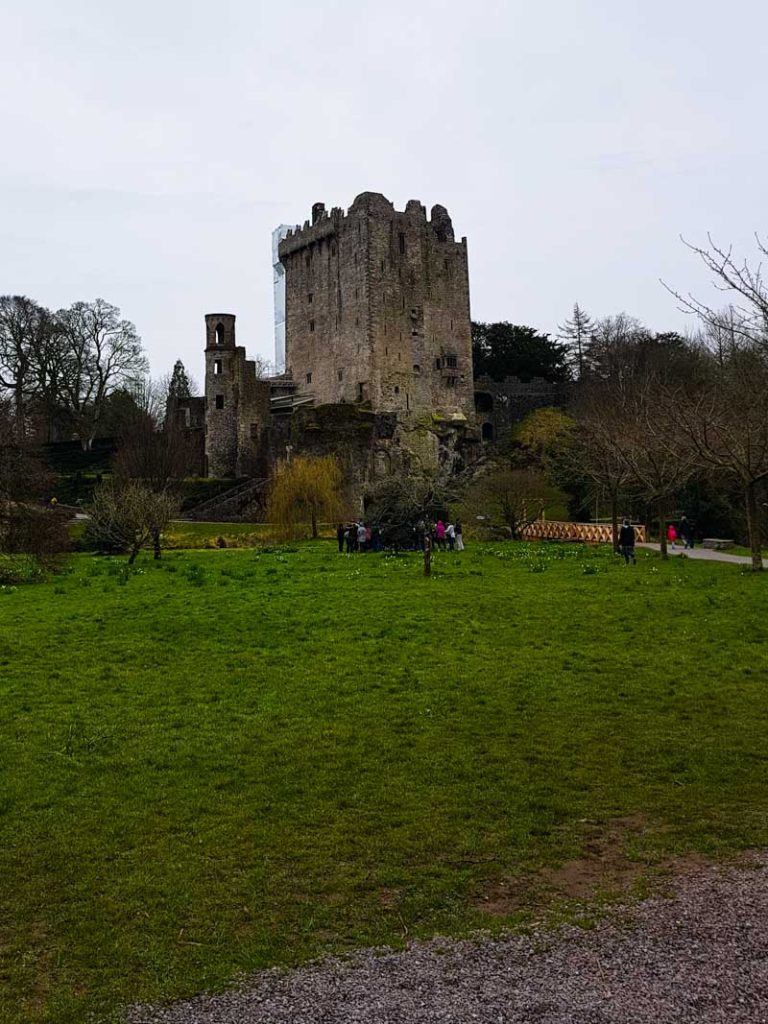
Blarney Castle’s grounds are a treat in themselves. Visitors can explore lush gardens, including the Poison Garden filled with toxic plants. There are two waterfalls, a fairy garden for those travelling with little ones and much more.
To avoid long queues, arrive early or book tickets in advance. Comfortable shoes are essential for climbing the narrow castle stairs.
The best time to visit is during spring or autumn when crowds are smaller, and the weather is mild. Don’t forget your camera to capture the stunning views from the castle’s battlements.
Remember to bring hand sanitiser if you’re concerned about hygiene. The stone is cleaned regularly, but it’s kissed by numerous people daily.
Consider exploring the rest of the castle and its surroundings. The Rock Close, with its ancient trees and druidic stones, offers a mystical atmosphere.
Top tip: Arrive when the castle opens and head straight to the top if you plan on kissing the Blarney Stone. Even if you don’t want to kiss the stone, it is worth going up top. Then you will have the rest of your time to explore the stunning gardens. Arrive any later and you will have a significant wait to reach the top of the castle.
6. Explore the Wild Atlantic Way
The Wild Atlantic Way is a breathtaking coastal touring route that stretches along Ireland’s western seaboard. This stunning journey spans 2,500 kilometres, offering travellers a chance to experience the raw beauty of Ireland’s rugged coastline.
The Dingle Peninsula is a must-visit destination along the route. Its dramatic cliffs, pristine beaches, and charming villages provide a perfect blend of natural wonders and Irish culture.
Connemara, with its vast expanses of untamed wilderness, captivates visitors with its stark beauty. The region’s rolling hills, tranquil lakes, and windswept moors create an unforgettable landscape.
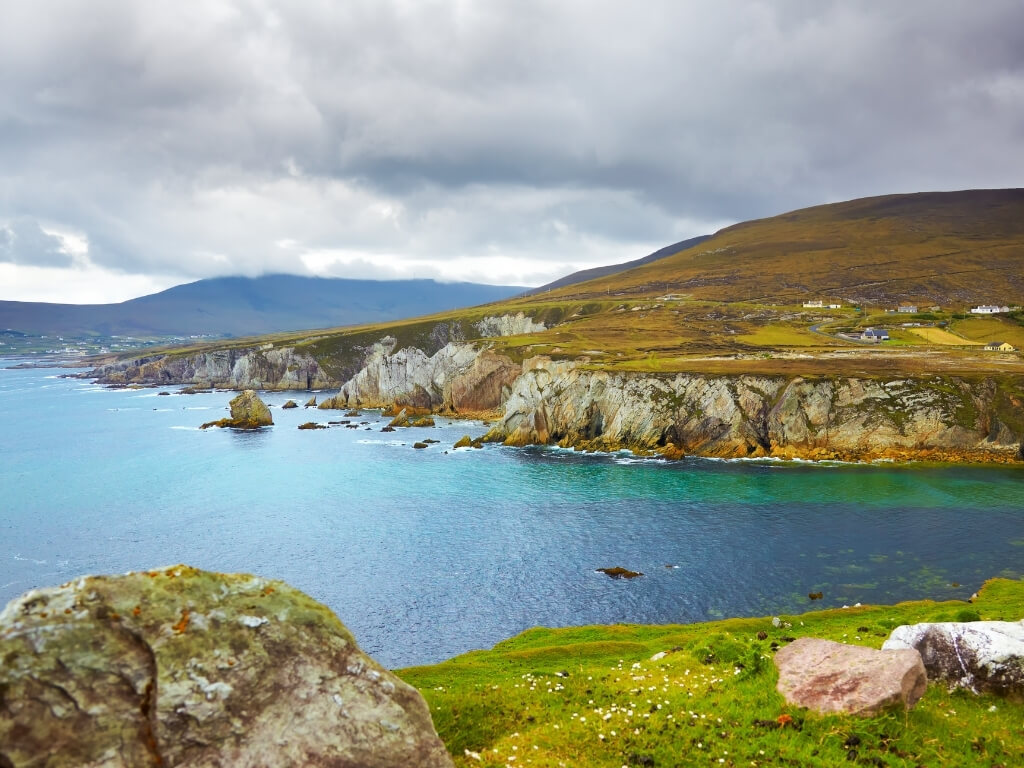
Achill Island, connected to the mainland by a bridge, boasts some of Ireland’s most spectacular scenery. Its towering cliffs, golden beaches, and clear waters make it a paradise for nature lovers.
My husband and I drove along the Wild Atlantic Way on our honeymoon before it had been designated as the Wild Atlantic Way around Achill and parts of County Mayo, Clare and Kerry and it is simply incredible.
The Wild Atlantic Way offers numerous activities for adventurous travellers. Surfing enthusiasts can catch waves at world-class spots dotted along the coast. Lahinch and Bundoran are particularly popular among surfers.
Hiking trails abound, allowing visitors to explore the rugged terrain on foot. The Cliffs of Moher Coastal Walk and the Slieve League Cliffs offer breathtaking views of the Atlantic Ocean.
Throughout the year, cultural festivals bring the Wild Atlantic Way to life. These events celebrate Irish music, dance, and traditions, providing a deeper insight into the local way of life.
7. Visit the Book of Kells and Trinity College
The Book of Kells, a stunning medieval manuscript, resides in the heart of Dublin at Trinity College. This ancient text, dating back to the 9th century, showcases intricate Celtic artwork and Latin gospels.
Trinity College’s Old Library houses this precious artefact. The Long Room, with its towering bookshelves and barrel-vaulted ceiling, is a sight to behold. Busts of great thinkers line the walkways, adding to the scholarly atmosphere.

Visitors can choose from guided tours or self-guided experiences. Booking in advance is recommended, especially during peak seasons. The exhibition provides insight into the creation and significance of the Book of Kells.
Trinity College itself is worth exploring. As Ireland’s oldest university, its historic grounds have educated notable figures for centuries. The campus architecture blends Georgian and Victorian styles.
Opening hours vary by season, so checking the official website is advisable. Photography is not permitted in the exhibition area to preserve the delicate manuscript. That said, there is an informative exhibition about the book and how and where it was created before you view the book itself and you are permitted to take pictures of the exhibition displays.
A visit to the Book of Kells and Trinity College offers a unique glimpse into Ireland’s rich cultural heritage. It’s a must-see for history enthusiasts, art lovers, and curious travellers alike.
Top tip: Book your ticket to visit the Book of Kells ahead of your visit, particularly if you are visiting during the peak summer months.
8. Visit the Aran Islands
The Aran Islands, located off Ireland’s west coast, offer a unique glimpse into traditional Irish culture and stunning landscapes. These three islands – Inishmore, Inishmaan, and Inisheer – are known for their rugged beauty and rich history.
Cycling is a popular way to explore the islands. Visitors can rent bicycles and pedal along scenic coastal routes, taking in breathtaking views of the Atlantic Ocean and limestone cliffs.
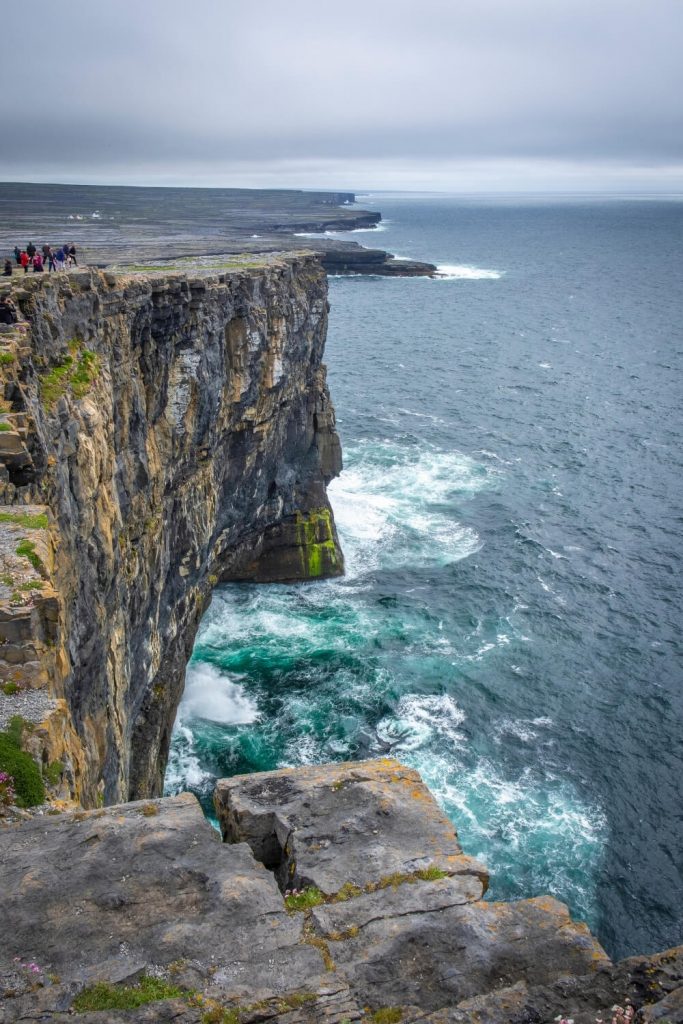
Ancient stone forts dot the landscape, with Dún Aonghasa on Inishmore being a must-visit site. This prehistoric fort perches dramatically on the edge of a 100-metre cliff, providing spectacular vistas.
Local crafts are an integral part of Aran Islands culture. Visitors can watch skilled artisans create the famous Aran sweaters, known for their intricate patterns and high-quality wool.
Ferry services operate regularly from Galway and Doolin to the islands. It’s advisable to book in advance, especially during peak tourist seasons.
Accommodation options range from cosy B&Bs to self-catering cottages. Booking ahead is recommended, particularly in the summer months when the islands are busiest.
The Aran Islands offer a tranquil escape from the mainland, where visitors can immerse themselves in the unhurried pace of island life and experience authentic Irish traditions.
9. Walk Through the Ancient Passage Tomb of Newgrange
Newgrange stands as a marvel of prehistoric engineering in County Meath, Ireland. This 5,200-year-old passage tomb predates the Egyptian pyramids and Stonehenge. Its imposing circular mound spans 85 metres in diameter and 13 metres in height.
The tomb’s most striking feature is its roof box, designed to align with the rising sun during the winter solstice. On these mornings, a beam of light illuminates the inner chamber, creating a breathtaking spectacle.
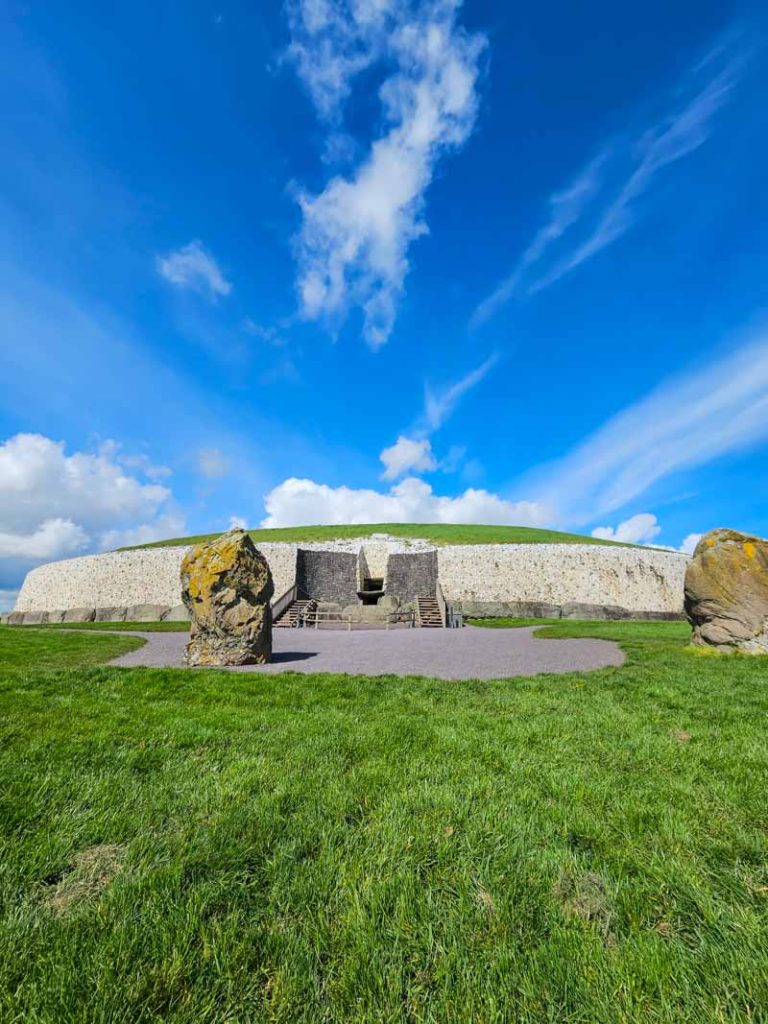
Visitors can explore the tomb’s interior through guided tours. The narrow passageway leads to a cruciform chamber with intricate stone carvings. These tours offer insights into Neolithic culture and the astronomical precision of ancient builders.
UNESCO recognises Newgrange as a World Heritage Site, cementing its place among humanity’s most significant archaeological treasures. The site’s visitor centre provides context through exhibits and audiovisual presentations.
To witness the solstice event, one must enter an annual lottery. Lucky winners join a select group inside the chamber during those special December mornings. For those unable to attend, the visitor centre offers a simulation of this awe-inspiring phenomenon.
Booking in advance is essential, especially during peak tourist seasons, and also because visitor numbers are limited each day due to the site’s status as a UNESCO World Heritage Site. The site’s popularity means tours often fill up quickly. Visitors should dress warmly and wear sturdy shoes, as the terrain can be uneven.
Top tip: Book the full Knowth and Newgrange guided tour. You will first visit Knowth and learn more about these Neolithic Passage Tombs before visiting Newgrange. We did this as a family on a trip to Ireland in 2023 and it was simply amazing, even our then 9-year-old enjoyed it.
Conclusion
Now you should have an idea of at least one or two must-do experiences to add to your next Ireland itinerary.
Whilst popular attractions like the Cliffs of Moher and the Book of Kells are must-sees, travellers should also remember to venture off the beaten path to discover hidden coves, quaint villages, and lesser-known historical sites await those willing to explore.
Ireland’s charm lies in its ability to blend the old with the new. Modern cities sit alongside ancient ruins, creating a unique tapestry of experiences. By embracing both aspects, you can truly appreciate the country’s diverse offerings.
You might also enjoy reading:
- Best Places to Visit in Ireland
- Wild Atlantic Way 5-Day Itinerary
- A Complete Guide to the Wild Atlantic Way
- Best Natural Landmarks in Ireland to Visit
